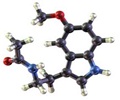Alzheimer's patients, who suffer from obstructive sleep apnea may benefit from continuous positive airway pressure (CPAP) treatment, which has been found to improve cognitive function,
Researchers have said that CRAP, or continuous positive airway pressure, treatment, improves the cognitive function of Alzheimer's patients suffering from obstructive sleep apnea.
A CPAP machine is a breathing assist device worn over the mouth or nose, providing constant pressurized air and giving nighttime relief for individuals who suffer from sleep apnea."Although it is unlikely that OSA causes dementia, the lowered oxygen levels and sleep fragmentation associated with OSA might worsen cognitive function," said Lead researcher Sonia Ancoli-Israel, Ph.D., professor of psychiatry at the UC San Diego School of Medicine.
"This study, which showed significant improvement in patients' neurological test scores after treatment with CPAP, suggests that clinicians who treat patients with Alzheimer's disease and sleep apnea should consider implementing CPAP treatment," she added.
"Any intervention that improves cognition in patients with Alzheimer's disease is likely to result in greater independence for the patient and less burden on their caretakers," said co-author Jody Corey-Bloom, M.D., Ph.D., professor of neurosciences at UC San Diego and research at UCSD's Shiley-Marcos Alzheimer's Disease Research Centre.
In the study involving 52 men and women with mild to moderate Alzheimer's disease and obstructive sleep apnea (OSA), the participants were randomized to either therapeutic CPAP for six weeks, or a placebo CPAP for three weeks followed by therapeutic CPAP for an additional three weeks.
Both groups received a complete battery of neuropsychological tests before treatment, at three and at six weeks.
Advertisement
However, after the placebo group was switched to therapeutic CPAP treatment, the group as a whole showed a significant improvement in cognition after three weeks of treatment.
Advertisement
The study was published in the Journal of the American Geriatric Society.
Source-ANI
TAN















